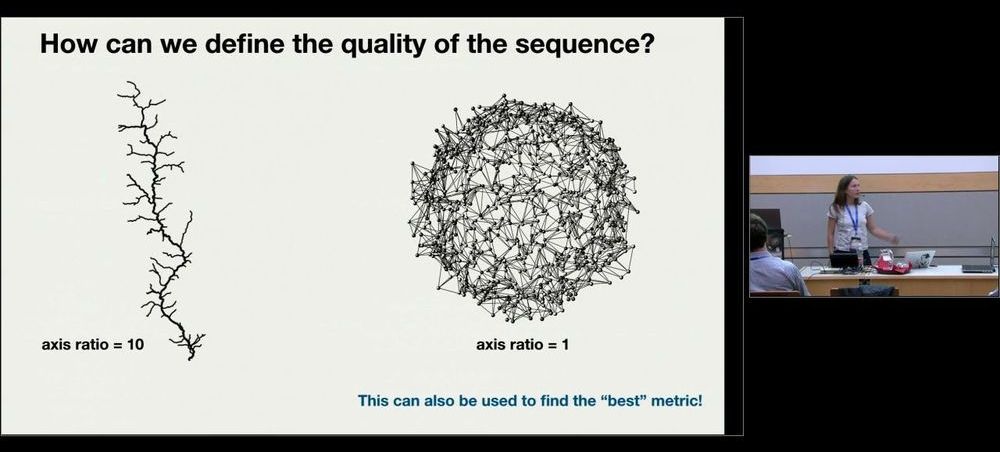Archive for the ‘materials’ category: Page 203
Jun 22, 2020
“Intelligent Concrete” Heals Itself – Enabling Highways and Bridges to Prevent Their Own Damage
Posted by Quinn Sena in categories: materials, transportation
‘Intelligent concrete’ could cut down on road repairs and traffic.
Roads always seem to need repairs. Luna Lu is giving concrete the ability to “talk” and even heal itself.
Her lab at Purdue University is developing technology that would allow concrete-paved bridges and highways to reveal more accurately when they need repairs and to come equipped with materials that respond to potential damage.
Jun 20, 2020
From sea to sea? N.S. company turns ghost gear into plastic lumber
Posted by Quinn Sena in category: materials
Lost or abandoned fishing gear is being fished out of the sea. To keep it out of the dump, one company is turning the garbage into synthetic wood with the hope that it has a new role back in the sea.
This post by Dr. Robert Zubrin originally appeared at National Space Society.
Mars Is The New World
Among extraterrestrial bodies in our solar system, Mars is singular in that it possesses all the raw materials required to support not only life, but a new branch of human civilization. This uniqueness is illustrated most clearly if we contrast Mars with the Earth’s Moon, the most frequently cited alternative location for extraterrestrial human colonization.
Jun 19, 2020
Dash of graphene leads to “toughest” solid battery electrolyte to date
Posted by Quinn Sena in categories: energy, materials
A solid-state battery, where the liquid electrolyte that carries the charge is swapped out for a solid alternative, promises a number of performance benefits over today’s solutions, but there are a few problems to solve first. Scientists at Brown University are reporting a new design that overcomes some of the key hurdles, using a delicate mix of ceramics and the wonder material graphene to produce the toughest solid electrolyte to date.
As the solution that carries the lithium ions back and forth between the anode and cathode while the battery is charged and discharged, liquid electrolytes play an important role in the function of today’s lithium-ion batteries. But these highly volatile liquids bring a risk of fire when the battery short circuits, so there is room for improvement in terms of safety.
Beyond that, alternative electrolytes could offer greater energy density and even allow for other components of the battery to be upgraded, too. For example, the anode is typically made out of copper and graphite, but scientists believe a solid electrolyte would enable the battery to function with a pure lithium anode, something that could break the “energy-density bottleneck,” according to one recently published study.
Jun 18, 2020
Graphene smart textiles developed for heat adaptive clothing
Posted by Quinn Sena in categories: biotech/medical, materials
New research on the two-dimensional (2-D) material graphene has allowed researchers to create smart adaptive clothing which can lower the body temperature of the wearer in hot climates.
A team of scientists from the University of Manchester’s National Graphene Institute have created a prototype garment to demonstrate dynamic thermal radiation control within a piece of clothing by utilising the remarkable thermal properties and flexibility of graphene. The development also opens the door to new applications such as, interactive infrared displays and covert infrared communication on textiles.
The human body radiates energy in the form of electromagnetic waves in the infrared spectrum (known as blackbody radiation). In a hot climate it is desirable to make use the full extent of the infrared radiation to lower the body temperature which can be achieved by using infrared-transparent textiles. As for the opposite case, infrared-blocking covers are ideal to minimise the energy loss from the body. Emergency blankets are a common example used to deal with treating extreme cases of body temperature fluctuation.
Jun 17, 2020
AbsoluteBlack launches new graphene-based chain lube with huge longevity and efficiency claims
Posted by Quinn Sena in categories: life extension, materials
Jun 15, 2020
Researchers create first room-temp ‘magnon switch’ with industrially useful properties
Posted by Quinn Sena in categories: computing, materials
Scientists at the National Institute of Standards and Technology (NIST) and the Massachusetts Institute of Technology (MIT) have demonstrated a potentially new way to make switches inside a computer’s processing chips, enabling them to use less energy and radiate less heat.
The team has developed a practical technique for controlling magnons, which are essentially waves that travel through magnetic materials and can carry information. To use magnons for information processing requires a switching mechanism that can control the transmission of a magnon signal through the device.
While other labs have created systems that carry and control magnons, the team’s approach brings two important firsts: Its elements can be built on silicon rather than exotic and expensive substrates, as other approaches have demanded. It also operates efficiently at room temperature, rather than requiring refrigeration. For these and other reasons, this new approach might be more readily employed by computer manufacturers.
Jun 14, 2020
Nano-sized diamond thread may be a super-strong wonder material
Posted by Quinn Sena in categories: materials, nanotechnology
Circa 2015
Move over, graphene — you’re not the only miracle material in town. Australian researchers have discovered that diamond nanothreads (one-dimensional diamond crystals capped with hydrogen) could be extremely strong. While scientists thought they were brittle when announced just a month ago, it turns out that they become supremely flexible (and thus durable) when you introduce the right kinds of defects. You could create nanoscopic structures that are just as strong as you need them to be, with a ‘perfect’ mix of bendy and rigid shapes.
Jun 13, 2020
Scientists Detect Surprise Structures Wrapped Around Earth’s Core
Posted by Quinn Sena in category: materials

Blobs of hot, dense material that curl around Earth’s core are much more widespread than previous research suggests.
A new method of analysing earthquake data has found even more of the previously detected continent-sized zones at the boundary between the planet’s core and mantle.
Continue reading “Scientists Detect Surprise Structures Wrapped Around Earth’s Core” »
















